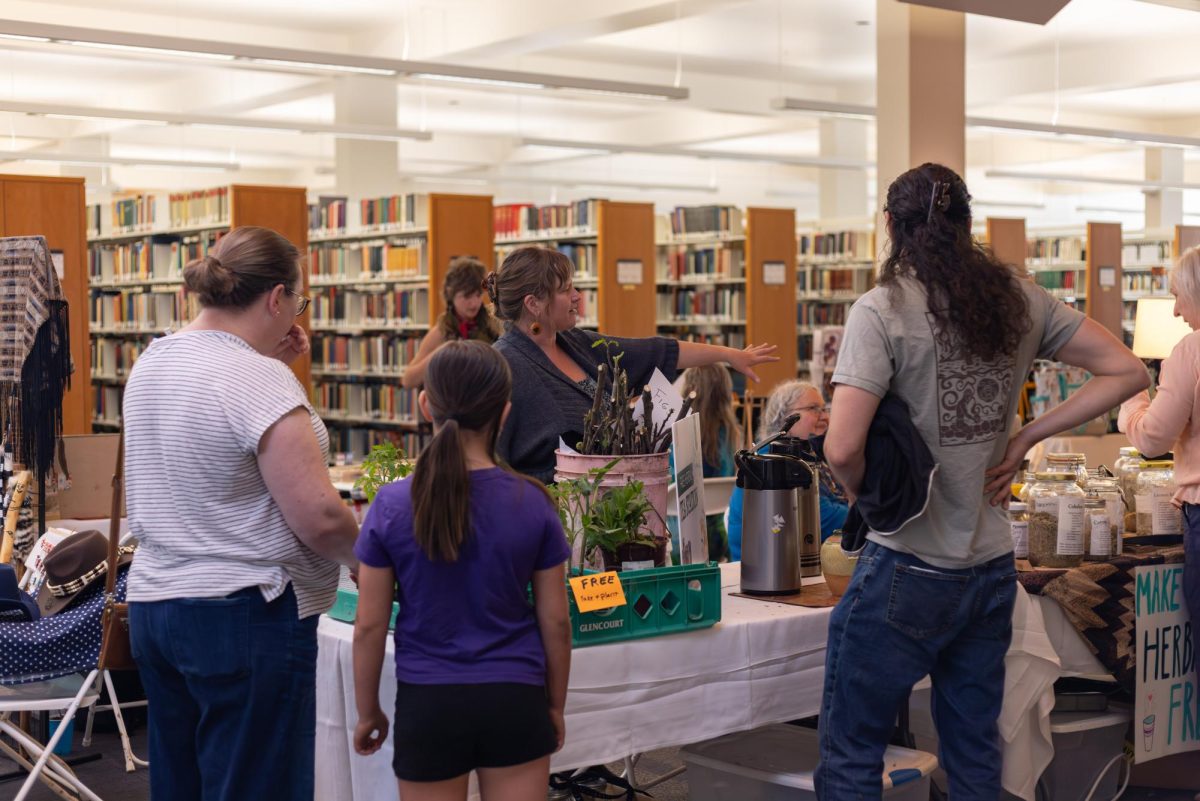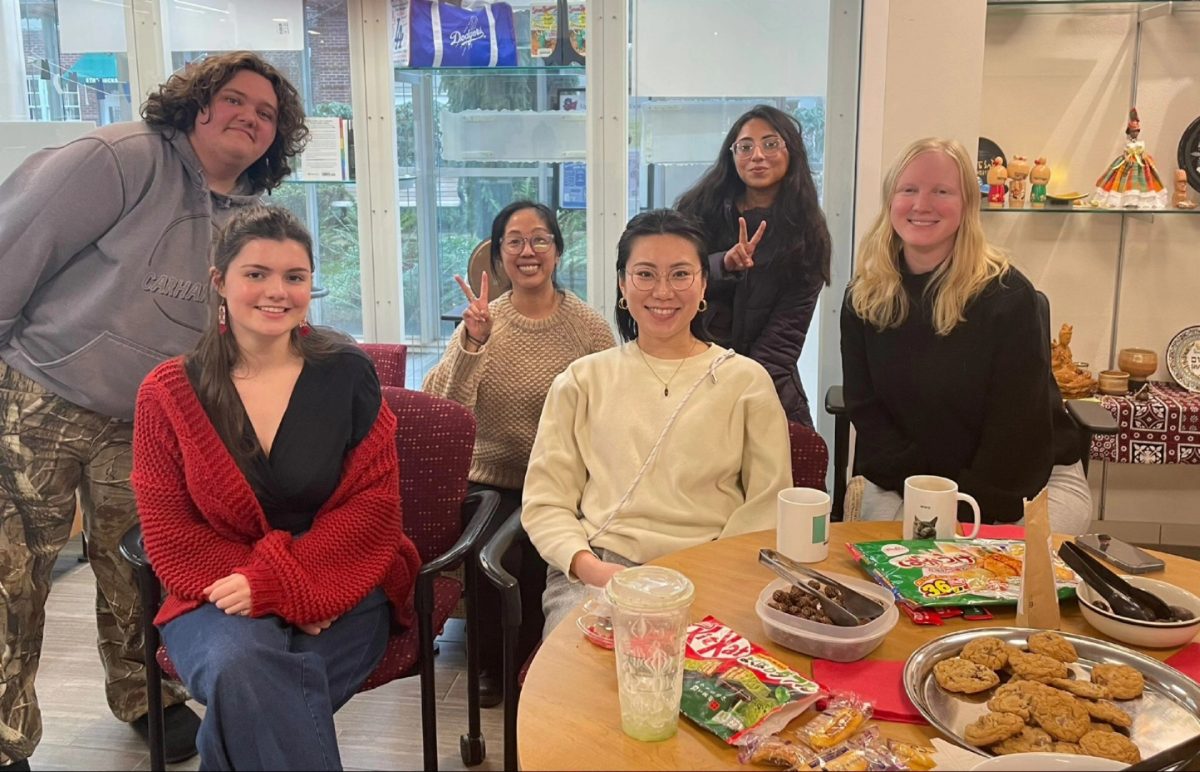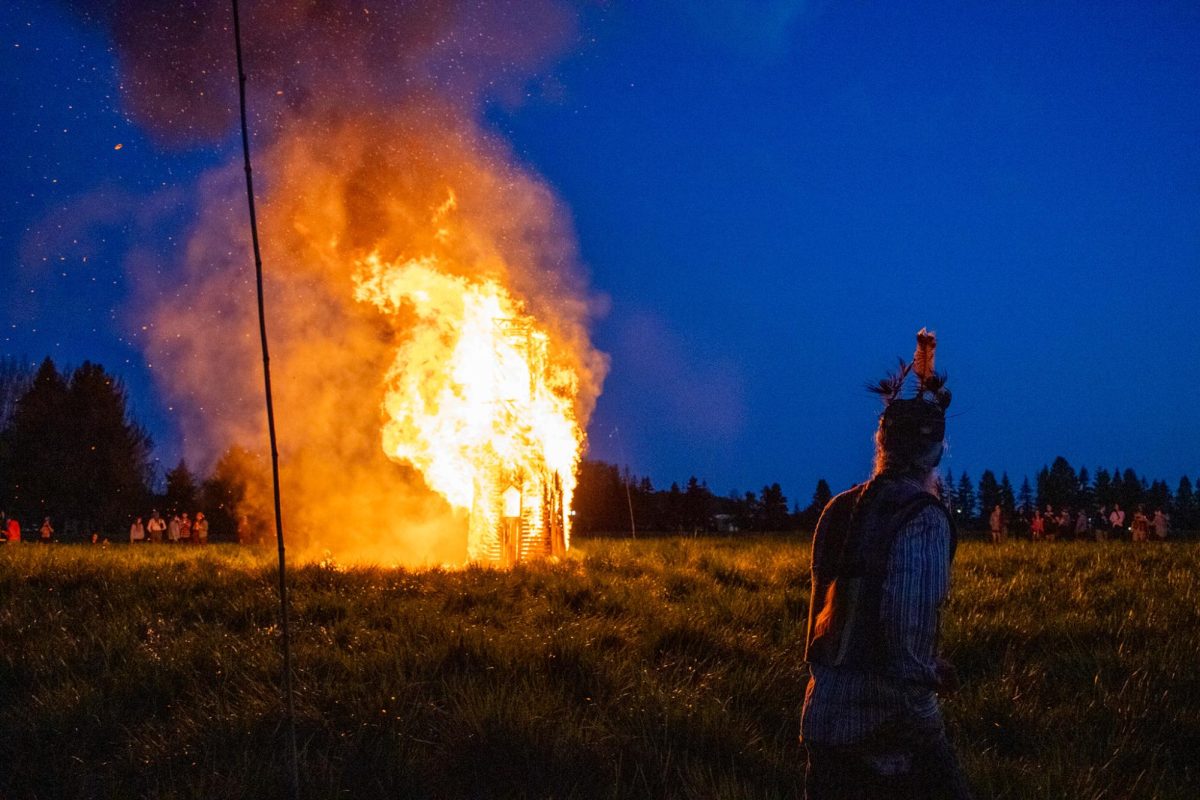Amber McKenna
Features Editor
This semester in the Miller Fine Arts Center, one may hear something similar to nails on a chalkboard.
No, someone isn’t trying to give you the chills. Students are practicing the art of printmaking. It is an art form that requires precision, craft and creativity.
Printmaking is the process of printing a design on cloth or paper by engraving a piece of glass or metal through etching or carving. Once the design is etched into the glass or metal, the surface is covered with ink and wiped down with cheese cloth to remove the excess ink. This leaves ink only in the lines of the design.
The material, for example cloth or paper, is placed over the top of the plate and put through the printing press.
The class is working with Plexiglas and has the assignment of producing an edition of prints on cotton paper, meaning they must print one design that appears exactly the same five times.
Junior Laura Johnson, primarily a painter, said she enjoys how multiple prints can be made of the same design.
“Producing identical prints shows integrity of the printer and the plate,” she said.
Sophomore Matt Statz said he enjoys this aspect of printmaking as well because it is a drastic contrast from painting.
“When you do a painting, it is one of a kind; something you can’t reproduce,” Statz said. “With printmaking you can make replicas, and there is more freedom.”
He said he enjoys the liberty of being in this upper division class and experiencing an art form completely different from others.
“I don’t draw anything out before I do it; I’m more of a conceptual artist,” Johnson said. “I think ‘What am I trying to say?’ and ‘Why am I saying it?’”
The class is taught by Ron Mills, professor of art and visual culture, who wishes to pass down this unique craft.
“With printmaking, the possibilities are infinite; variables can be modified,” Mills said. “It enhances the creative process.”
Mills said the best thing about an upper division class such as printmaking is the connection he gets to make with his students and the opportunity he has to be a mentor to young artists.
Johnson said this printmaking opportunity is a rare one because of the size and costs of printing presses. In this lab there are two presses: one manual and one electronic.
In the future, the class will carve designs into wax and burn designs in copper and other metals to produce their plates for printing. They will also experiment with different colored inks and textures.
“It’s not a normal class,” Statz said.






